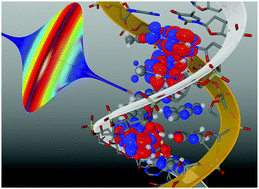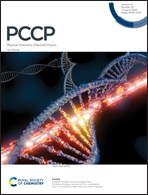Excitation energy transport in DNA modelled by multi-chromophoric field-induced surface hopping†
Abstract
Absorption of ultraviolet light is known as a major source of carcinogenic mutations of DNA. The underlying processes of excitation energy dissipation are yet not fully understood. In this work we provide a new and generally applicable route for studying the excitation energy transport in multi-chromophoric complexes at an atomistic level. The surface-hopping approach in the frame of the extended Frenkel exciton model combined with QM/MM techniques allowed us to simulate the photodynamics of the alternating (dAdT)10:(dAdT)10 double-stranded DNA. In accordance with recent experiments, we find that the excited state decay is multiexponential, involving a long and a short component which are due to two distinct mechanisms: formation of long-lived delocalized excitonic and charge transfer states vs. ultrafast decaying localized states resembling those of the bare nucleobases. Our simulations explain all stages of the ultrafast photodynamics including initial photoexcitation, dynamical evolution out of the Franck–Condon region, excimer formation and nonradiative relaxation to the ground state.

- This article is part of the themed collection: 2020 PCCP HOT Articles


 Please wait while we load your content...
Please wait while we load your content...